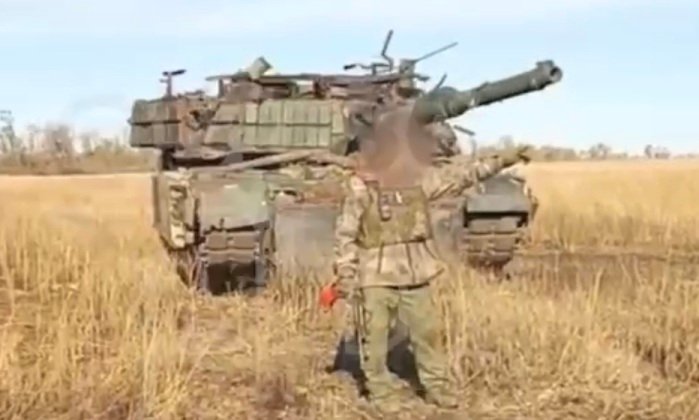<p >Russian Army units have captured a Ukrainian Army M1A1 Abrams main battle tank near the city of Pokrovsk in the disputed Donetsk region, which further diminishes the already very limited number of remaining U.S.-supplied tanks in Ukrainian service. The Abrams was operated by the 47th Mechanised Brigade, the elite status of which had led it to be prioritised to receive some of the country’s newest military equipment. Alongside the Abrams, the brigade also received the Ukrainian Army’s most capable European supplied tank class the&nbsp;<a href=" >Leopard 2A6</a>,&nbsp;while its mechanised infantry battalions use newly refurbished American&nbsp;<a href=" >Bradley fighting vehicles</a>, and its 1st Self-Propelled Artillery Battalion with American M109 howitzers. Russian forces have captured several Abrams tanks since the vehicles were&nbsp;<a href=" >first seen</a>&nbsp;deployed on February 23, with the tanks having seen the first loss&nbsp;<a href=" >confirmed</a>&nbsp;just three days afterwards followed by a succession of further losses over the next two months. This culminated in a temporary <a href=" target="_blank">withdrawal from the frontlines</a> in April, after which armour protection levels were increased. Losses have nevertheless continued to occur frequently since that time.</p><p ><img src=" title="Abrams Tank Destroyed near Avdiivka"></p><p >As Abrams tanks in the Ukrainian inventory have rapidly dwindled, images of the vehicles being used in combat, captured, or destroyed have become increasingly rare. Nevertheless, an image released on September 14 has <a href=" claims from Russian sources that another Abrams tank had been captured. The image’s release followed the releases of two prior images&nbsp;<a href=" the losses</a>&nbsp;of two other M1A1 tanks in combat – the first tank near the village of Volchye in the Pokrovsk direction in the Donbas, and the second in the same region near the settlement of Berdychi. Footage released around a week before this confirmed serious damage to another Abrams tank, which was filmed&nbsp;<a href=" captured</a>&nbsp;and towed away by Russian forces near the&nbsp;<a href=" located town</a>&nbsp;of Avdiivka alongside a Leopard 2A6.</p><p ><img src=" title="Russian Forces with Captured Up-Armoured Abrams Tank in September" ></p><p >Over 20 of the 31 Abrams tanks delivered to Ukraine have been destroyed, disabled or captured, with most kills captured on film being achieved&nbsp;<a href=" >by guided artillery</a>&nbsp;or&nbsp;<a href=" >by single use ‘kamikaze’ drones</a>. One particularly notable kill was confirmed to have been&nbsp;<a href=" >achieved by a Russian T-72B3</a>&nbsp;tank after the two exchanged fire, while other tanks have been abandoned.&nbsp;Western media outlets’ interviews with Ukrainian personnel have highlighted&nbsp;<a href=" >dissatisfaction</a>&nbsp;with the Abrams’ performance, citing both technical issues such as vulnerability of electronic components to condensation, as well as their vulnerability to Russian fire. Serious shortages of high explosive rounds compatible with the tank’s 120mm gun have also been a major issue. The sheer size of the Abrams has reportedly led them to attract particularly high quantities of fire, while their much larger profiles compared to Ukraine’s Soviet built tanks&nbsp;<a href=" >such as T-80s</a>&nbsp;and T-64s make them easier to target.&nbsp;</p>
Russian Forces Capture Abrams Tank Near Pokrovsk: How Many Are Left in Ukraine?

